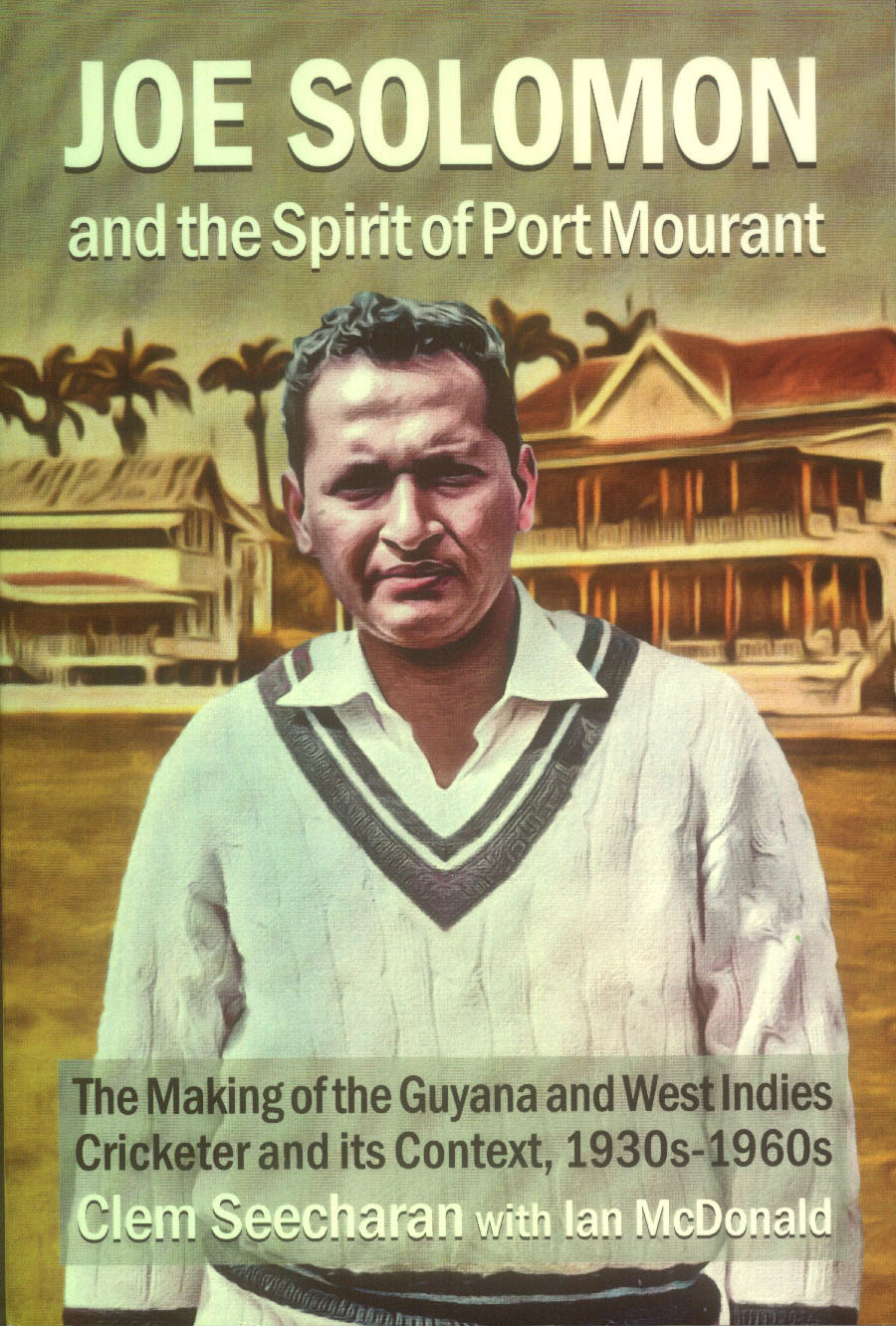While Joe Solomon’s cricketing oeuvre is immortalised in the epic 1960 tied test, historian Clem Seecharan has located those two unforgettable run outs and the rest of his achievements in warming waves of recollections and insights by fellow cricketers, commentators, aficionados and fans.
Seecharan’s and Ian McDonald’s Joe Soloman and the Spirit of Port Mourant is being launched today at 7 pm at the Georgetown Cricket Club Tarmac, fittingly at the edge of the world-famous Bourda sward now a shadow of itself.
And while there is a surfeit – a veritable glut – of excitement in today’s T20 derby, connoisseurs of the game and purists will agree that none of those matches can rise anywhere near to the drama and palpable tension of those couple of balls in 1960 when Solomon unerringly hit his mark.
In his own spare words as recounted in the book, Solomon said: “The Test in Brisbane was keenly contested, with Australia needing one run to win with two balls to be bowled in that final over.
“Kline played the seventh ball from Hall towards square leg and ran. I gathered the ball soon after the batsmen crossed, with full knowledge of the result if the run was made.
“I strained every sinew and aimed…I could see little more than one stump …there wasn’t much time. I let go… it hit!
“This was a glorious moment for me and my colleagues. History was made, and I was thrilled that I had contributed”.
In his own back cover synopsis of the book, Seecharan said that it “examines the private and wider social forces that made Joe the epitome of the qualities Worrell inculcated in his players: application, control of the emotions, fidelity to the traditions of the noble game, team spirit and an appreciation that West Indians expected their cricketers to be exemplary ambassadors, within and beyond the boundary”.
That one sentence perhaps points searingly at the state of West Indian cricket today and even the calamitous social and economic circumstances that now surround the sugar belt which once yielded the sweetest of cricket and a treasure trove of talent with Port Mourant at its epicentre and Solomon one of its better known exponents.
Indeed Solomon – now the oldest living West Indian cricketer at 92 – recounts the bountiful talent.
“Playing for the Port Mourant Cricket Club at the time were Rohan Kanhai, Basil Butcher, myself, Fielda Kempadoo, Johnny Teekasingh, Lutch Jaggernath, Assaud Khan, Cecil Appadu, Rex Ramnarace, Compton Bowall and a few others. The competition among the Berbice sugar estates, in the Davson Cup, was of a high standard, as they all possessed players of undoubted ability. Albion had the veteran bowler [left-arm medium pace and slow left-arm orthodox], `Sugar Boy’ Baijnauth [1916-85], and `Black’ Etwaroo, an effective fast-medium bowler; Rose Hall, Canje had Joe Sukwah, a batsman of fine technique and discipline on and off the field; Providence had `Cobra’ Ramdat, a left-arm wrist spinner [chinaman/googly] with the ability to extract a good deal of spin, turn and bounce (hence his nickname); Blairmont was blessed with two outstanding attacking batsmen who represented the colony, Charlie Paul and Leslie Amsterdam; Roy Fredericks came later…” and others.
The book is dedicated to “Joe Solomon of Port Mourant for his historic contribution to the first Tied test the Gabba, Brisbane, December 1960 and as a gift on his 92nd birthday, 24 August 2022”.
Chapters include Port Mourant Conquers `Mother India’: Joe Solomon’s Quiet mastery, his First Test Series, 1958-9; Joe’s Tied Test and the West Indian Seduction of the Australian Soul, 1960-1 and Joe’s Fixed Address at No.6: Solomon’s Niche in West Indies Cricket, 1962-5.






